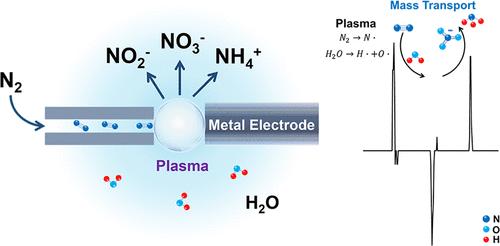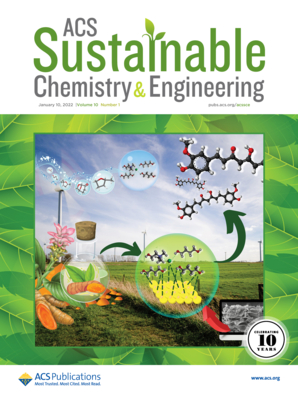Energy-Efficient, Sustainable Nitrogen Fixation in Water via In Situ Electrode-Activated Pulsed Plasma
IF 7.1
1区 化学
Q1 CHEMISTRY, MULTIDISCIPLINARY
引用次数: 0
Abstract
Sustainable nitrogen fixation is essential for advancing agriculture and chemical production. However, existing methods face trade-offs between energy intensity and efficiency. Low-activation-energy approaches fail to dissociate nitrogen effectively due to the strong N2 bond, while energy-intensive methods face energy loss from product decomposition. Here, we present an in-water plasma-based nitrogen fixation system that integrates metal electrodes (W, Al, and Fe) to achieve in situ activation of pulsed discharging plasma. This design enables efficient nitrogen dissociation and selective product formation of soluble nitrogen species (nitrate, nitrite, and ammonia), while minimizing decomposition through optimized product diffusion. This system achieves an energy consumption of 1.14 MJ mol–1 and a production rate of 12.9 mmol h–1 cm–2 for total soluble nitrogen species, surpassing other water-assisted methods and rivaling the Haber–Bosch process. Operating under ambient conditions, this electricity-driven, carbon-neutral approach offers a sustainable and efficient solution for decentralized application in agriculture and chemical production.

求助全文
约1分钟内获得全文
求助全文
来源期刊

ACS Sustainable Chemistry & Engineering
CHEMISTRY, MULTIDISCIPLINARY-ENGINEERING, CHEMICAL
CiteScore
13.80
自引率
4.80%
发文量
1470
审稿时长
1.7 months
期刊介绍:
ACS Sustainable Chemistry & Engineering is a prestigious weekly peer-reviewed scientific journal published by the American Chemical Society. Dedicated to advancing the principles of green chemistry and green engineering, it covers a wide array of research topics including green chemistry, green engineering, biomass, alternative energy, and life cycle assessment.
The journal welcomes submissions in various formats, including Letters, Articles, Features, and Perspectives (Reviews), that address the challenges of sustainability in the chemical enterprise and contribute to the advancement of sustainable practices. Join us in shaping the future of sustainable chemistry and engineering.
 求助内容:
求助内容: 应助结果提醒方式:
应助结果提醒方式:


